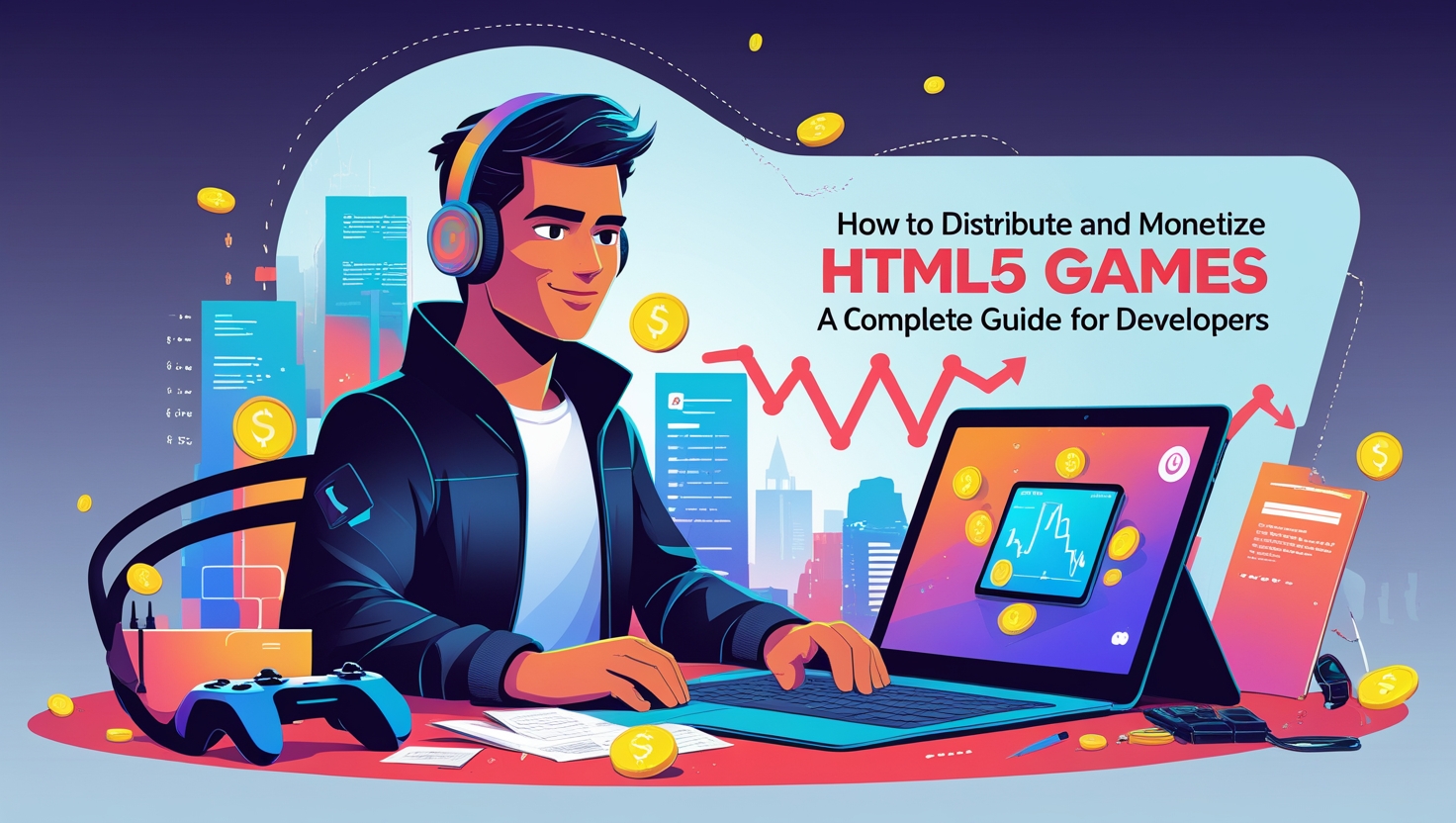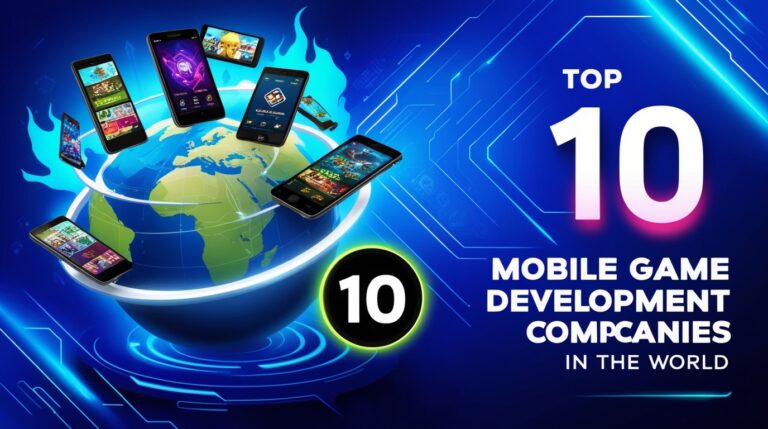The gaming industry has undergone a massive transformation in recent years, with HTML5 games emerging as a dominant force in the world of free games and online games. These lightweight, browser-based games are accessible on virtually any device, making them a favorite among players looking for free games to play without the hassle of downloads or installations. For developers, HTML5 games offer a cost-effective way to create engaging experiences, from car games and arcade games to puzzle games and beyond.
However, creating a great game is only half the battle. To succeed in the competitive world of gaming, developers must also focus on effective distribution and monetization strategies. In this blog, we’ll explore how to distribute and monetize HTML5 games, ensuring your hard work pays off. Whether you’re developing free PC games or the best free online games, this guide will help you reach your audience and generate revenue.
What Are HTML5 Games?
HTML5 games are browser-based games built using HTML5, JavaScript, and CSS. Unlike traditional games that require downloads or installations, HTML5 games run directly in a web browser. This makes them highly accessible and perfect for players looking for games to play online without any barriers. From car games to arcade games and puzzle games, HTML5 games cover a wide range of genres, catering to diverse audiences.
Why Distribute HTML5 Games?
HTML5 games have several advantages that make them worth distributing:
- Cross-Platform Compatibility: They work on almost any device with a modern web browser, including smartphones, tablets, and desktops.
- No Installation Required: Players can start gaming instantly, making them ideal for free online games.
- Low Development Costs: Compared to native apps, HTML5 games are cheaper and faster to develop.
- Easy Updates: Developers can update games without requiring users to download new versions.
However, to capitalize on these benefits, you need a solid distribution strategy.
How to Distribute HTML5 Games
Distribution is key to reaching your target audience and maximizing your game’s potential. Here are some effective ways to distribute HTML5 games:
1. Game Portals and Aggregators
Game portals are websites that host and showcase a variety of free games to play. Submitting your game to popular portals can significantly increase its visibility. Some well-known portals include:
- Kongregate: A hub for free online games across multiple genres.
- CrazyGames: Known for its collection of arcade games and puzzle games.
- GameDistribution: A platform that helps developers distribute and monetize HTML5 games.
- Poki: A popular destination for free games with a massive user base.
- Itch.io: A platform for indie developers to showcase their free PC games and more.
These platforms often have large user bases, making them ideal for reaching a wide audience. Some portals also offer monetization options, such as ads or revenue-sharing models.
2. Social Media Platforms
Social media is a powerful tool for promoting HTML5 games. Platforms like Facebook, Twitter, and Reddit allow you to share your game with millions of users. You can:
- Create engaging posts with screenshots or trailers.
- Run targeted ads to reach specific demographics.
- Join gaming communities and share your game with like-minded individuals.
For example, if you’ve created a car game, you can target car enthusiasts on social media. Similarly, puzzle games can be promoted in groups that enjoy brain teasers and challenges.
3. Your Own Website
Hosting your game on your own website gives you full control over its presentation and monetization. You can:
- Optimize your site for search engines (SEO) to attract organic traffic.
- Use analytics tools to track user behavior and improve your game.
- Build an email list to notify players about updates or new releases.
For instance, if you’ve developed the best free online games, you can create a dedicated website to showcase your portfolio and attract players.
4. App Stores
While HTML5 games are browser-based, you can still distribute them through app stores by wrapping them in a native shell using tools like Apache Cordova or PhoneGap. This allows you to reach mobile users who prefer downloading free games from app stores like Google Play or the Apple App Store.
5. Partnerships with Publishers
Collaborating with game publishers can help you reach a larger audience. Publishers often have established distribution networks and marketing resources. In exchange, they may take a percentage of your revenue or charge a fee for their services.
6. Cross-Promotion
If you have multiple games, you can promote your new HTML5 game within your existing games. This is a cost-effective way to leverage your current user base. For example, if you’ve created a car game, you can promote your new arcade game to players who enjoy fast-paced action.
How to Monetize HTML5 Games
Once your game is distributed, the next step is monetization. Here are some popular monetization strategies for HTML5 games:
1. In-Game Advertising
In-game ads are one of the most common ways to monetize HTML5 games. There are several types of ads you can use:
- Banner Ads: Displayed at the top or bottom of the screen.
- Interstitial Ads: Full-screen ads that appear between levels or during natural breaks in gameplay.
- Rewarded Video Ads: Players watch ads in exchange for in-game rewards, such as extra lives or currency.
Popular ad networks for HTML5 games include:
- Google AdSense
- AdMob
- Unity Ads
- GameDistribution
For example, if you’ve created a puzzle game, you can use rewarded video ads to offer players hints or solutions in exchange for watching an ad.
2. In-App Purchases (IAPs)
In-app purchases allow players to buy virtual items or premium features within the game. Examples include:
- Skins, costumes, or character upgrades.
- Power-ups or extra lives.
- Unlocking new levels or content.
To implement IAPs, you’ll need to integrate a payment gateway, such as PayPal or Stripe, and ensure your game provides value to encourage purchases.
3. Freemium Model
The freemium model offers a free version of the game with limited features, while a premium version unlocks additional content. This approach allows players to try the game before committing to a purchase. For instance, you can offer a free online game with basic levels and charge for advanced content.
4. Subscription Model
For games with ongoing content updates, a subscription model can be effective. Players pay a recurring fee to access exclusive features, new levels, or ad-free gameplay.
5. Sponsorships and Brand Integrations
Partnering with brands can be a lucrative monetization strategy. Brands may pay to have their products or logos integrated into your game. For example, a car game could feature real-world car brands.
6. Affiliate Marketing
You can earn commissions by promoting third-party products or services within your game. For instance, you could include links to gaming accessories or merchandise and earn a percentage of sales generated through those links.
7. Crowdfunding
If you’re developing a new HTML5 game, crowdfunding platforms like Kickstarter or Indiegogo can help you raise funds before the game is released. In exchange, backers may receive early access or exclusive rewards.
Best Practices for Distributing and Monetizing HTML5 Games
To maximize the success of your HTML5 game, follow these best practices:
- Optimize for Performance: Ensure your game loads quickly and runs smoothly on all devices. Slow performance can drive players away.
- Focus on User Experience: Design your game with the player in mind. Intuitive controls, engaging gameplay, and attractive visuals are essential.
- Test Across Platforms: Make sure your game works well on different browsers and devices to reach the widest possible audience.
- Leverage Analytics: Use tools like Google Analytics to track player behavior and identify areas for improvement.
- Engage with Your Community: Respond to player feedback, update your game regularly, and build a loyal fan base.
- Experiment with Monetization: Don’t rely on a single monetization method. Test different strategies to find what works best for your game.
Challenges in Distributing and Monetizing HTML5 Games
While HTML5 games offer many opportunities, they also come with challenges:
- Competition: The market is saturated with free games, making it difficult to stand out.
- Ad Blockers: Many players use ad blockers, which can reduce ad revenue.
- Monetization Balance: Overloading your game with ads or IAPs can frustrate players and harm retention.
- Discoverability: With so many games to play online, getting noticed can be tough.
To overcome these challenges, focus on creating high-quality games, building a strong brand, and using a mix of distribution and monetization strategies.
Conclusion
HTML5 games have immense potential, but success requires more than just great gameplay. By leveraging effective distribution channels and implementing smart monetization strategies, you can turn your HTML5 game into a profitable venture. Whether you’re targeting casual players or hardcore gamers, the key is to understand your audience, deliver value, and continuously adapt to the ever-changing gaming landscape.
From car games and arcade games to puzzle games and beyond, the possibilities are endless. With the right approach, your HTML5 game can reach millions of players worldwide and generate sustainable revenue. So, start distributing, monetizing, and leveling up your game development journey today!




